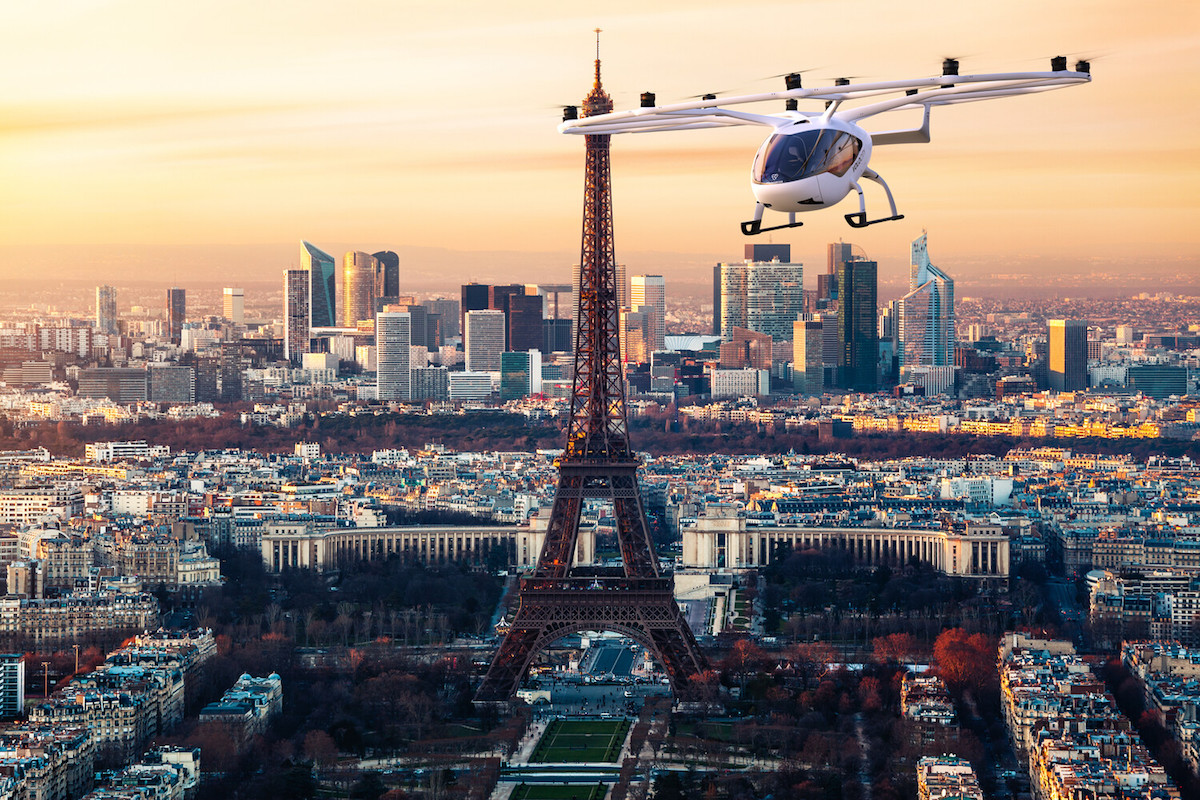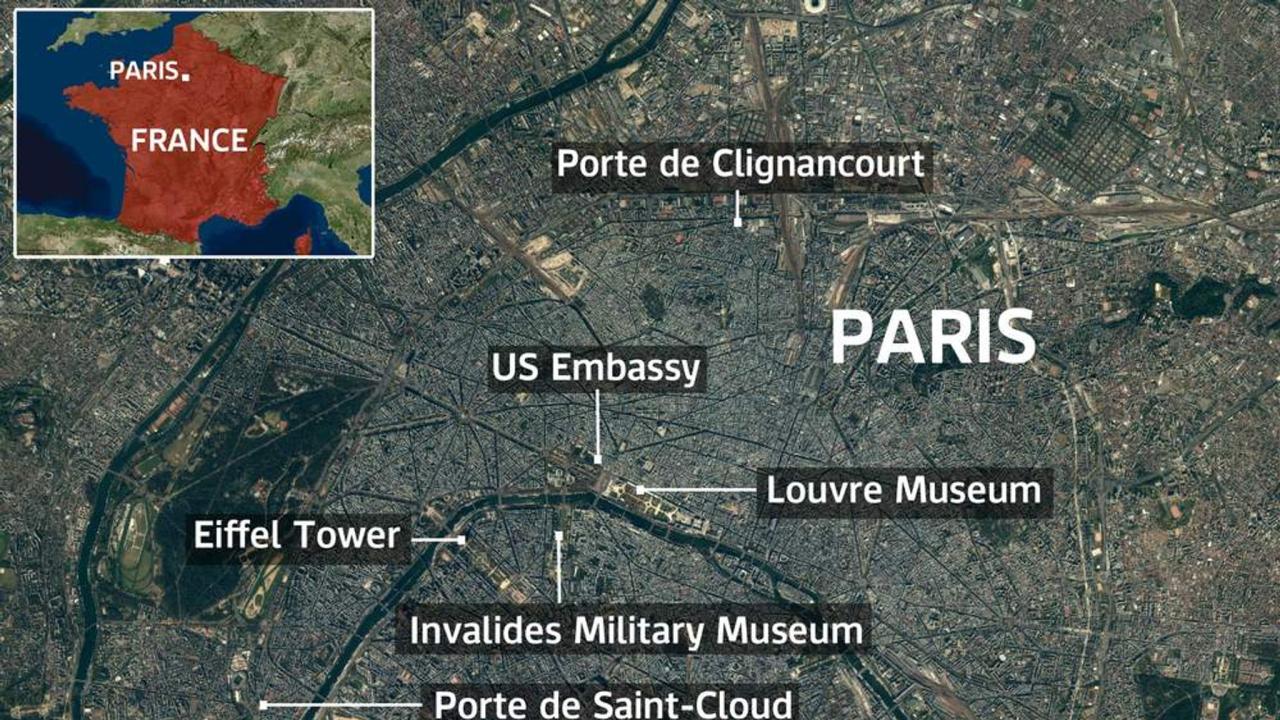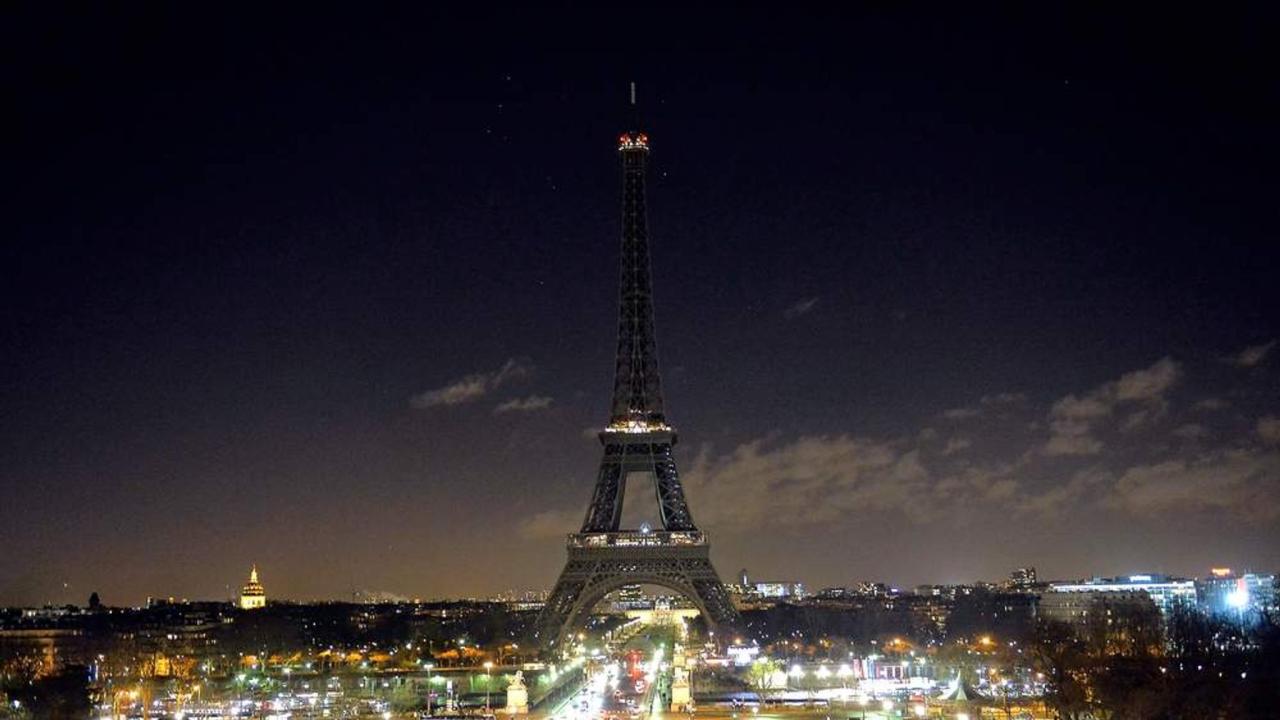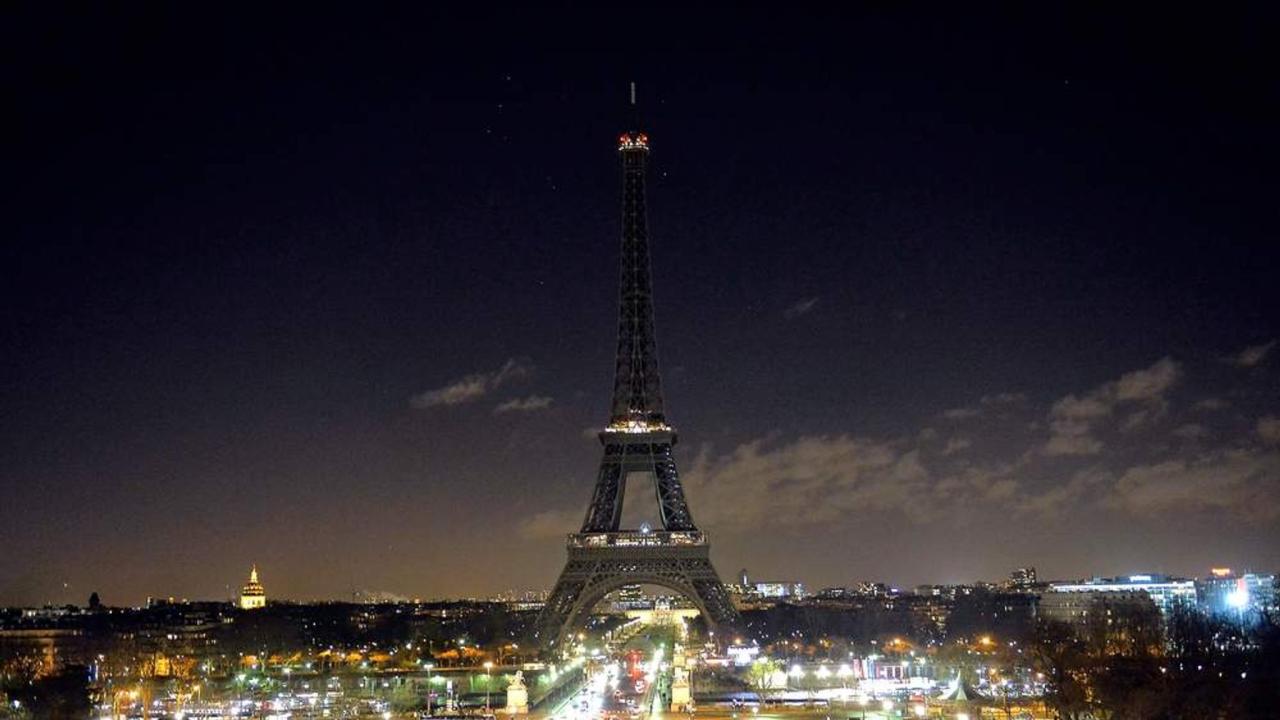Mystery drone Paris: Imagine a silent, unseen craft gliding over the Eiffel Tower, a technological ghost in the City of Lights. This exploration delves into the hypothetical scenario of a mystery drone appearing above Paris, examining its potential specifications, flight paths, purpose, and the ensuing public reaction. We’ll analyze possible drone designs, consider the challenges of navigating Parisian airspace, and speculate on the identities of those behind such an operation.
We’ll dissect various theories surrounding the drone’s mission, from sophisticated surveillance to potential acts of sabotage. The investigation will also cover the likely media frenzy and public response to such a clandestine event, creating a comprehensive picture of this intriguing possibility.
The Drone’s Specifications and Capabilities

A drone capable of undetected flight over Paris, a city densely populated with surveillance systems, requires a sophisticated design incorporating advanced technology and meticulous planning. Its specifications would need to balance stealth with the necessary capabilities for its mission. Factors like size, propulsion system, camera quality, and flight endurance are all crucial elements.
Ever wondered about those unexplained drone sightings over Paris? It’s a real head-scratcher, right? Check out this article for some insight into the ongoing mystery surrounding these unauthorized flights: mystery drone paris. The mystery drone Paris situation highlights the challenges of regulating airspace and ensuring safety in increasingly crowded skies. Hopefully, we’ll get some answers soon!
Drone Specifications and Capabilities
To remain undetected, the drone would likely be small and lightweight, perhaps resembling a large bird in size and shape. This minimizes its visual impact and radar signature. Propulsion would likely rely on quiet, high-efficiency electric motors with multi-rotor configurations for maneuverability. Carbon fiber construction would contribute to both lightness and structural strength. The camera system would need high-resolution capabilities for detailed imagery, possibly incorporating thermal imaging for night operations.
Flight duration would need to be sufficient to complete its mission, potentially enhanced through the use of swappable batteries or a design incorporating solar charging capabilities. A flight time of at least 2 hours would be desirable.
Payload Capacity and Potential Uses
The payload capacity would depend on the drone’s size and design. A smaller drone might only carry a high-resolution camera and a small data storage device. Larger drones could potentially carry heavier payloads, such as more sophisticated sensors, communication equipment, or even small packages for delivery. Potential uses for such a drone could range from surveillance and data gathering to targeted delivery of small items, depending on its size and capabilities.
For example, a smaller drone could be used for discreet surveillance of a specific location, while a larger drone might be used for delivering a small package to a remote location within the city.
Comparison of Hypothetical Drone Models
The following table compares three hypothetical drone models, each designed for different clandestine operations in a complex urban environment like Paris. The specifications are illustrative and represent a range of potential capabilities.
| Model | Size (Dimensions) | Payload Capacity | Flight Duration |
|---|---|---|---|
| Raven | 15cm x 15cm x 5cm | 50g (Camera, GPS) | 1.5 hours |
| Nightjar | 25cm x 25cm x 10cm | 250g (Camera, Thermal Imager, Data Storage) | 2.5 hours |
| Osprey | 40cm x 40cm x 15cm | 500g (Camera, Thermal Imager, Communication System, Small Package) | 3.5 hours |
Possible Flight Paths and Locations in Paris
Planning drone flight paths in Paris requires careful consideration of airspace restrictions, landmark proximity, and potential security concerns. Three sample routes are presented below, highlighting the complexities of urban drone operation. These are hypothetical examples and should not be interpreted as recommendations for actual flight plans. Always adhere to local regulations and obtain necessary permits before operating a drone.
Plausible Flight Paths
Several factors influence optimal drone flight paths, including airspace restrictions, landmark visibility, and the need to avoid populated areas. The following three routes illustrate different approaches to navigating the Parisian airspace.
- Route 1: Seine River Cruise. This route follows the Seine River, offering stunning views of iconic landmarks like the Eiffel Tower, Notre Dame Cathedral, and the Louvre Museum. It maintains a relatively low altitude to minimize airspace conflict and remains within easily navigable, open areas. The river acts as a natural corridor, simplifying navigation and providing visual references. However, proximity to bridges and other structures necessitates careful flight planning and obstacle avoidance.
- Route 2: Parks and Gardens Circuit. This path utilizes Paris’s extensive park system, such as the Tuileries Garden, Luxembourg Gardens, and the Bois de Boulogne. These green spaces offer more open airspace and reduce the risk of collisions with buildings or people. However, navigating the trees and varying terrain within the parks requires precise drone control and potentially higher altitude to gain a clear view of the surroundings.
This route sacrifices some landmark visibility for enhanced safety and maneuverability.
- Route 3: Elevated Perspective of the City Center. This ambitious route, assuming necessary permissions are obtained, would involve flying at a higher altitude to capture a broader perspective of the city center. This would require navigating complex airspace and adhering to strict regulations. The route would likely involve pre-programmed waypoints and a sophisticated flight planning system to avoid collisions and remain within legal limits. This path offers spectacular panoramic views but presents the greatest challenges in terms of regulatory compliance and safety.
Altitude Considerations
Flying at different altitudes in Paris presents a trade-off between obtaining optimal views and adhering to safety regulations. Lower altitudes offer clearer details of individual landmarks but increase the risk of collisions with buildings, trees, and people. Higher altitudes provide broader perspectives but require more advanced flight planning and greater adherence to airspace regulations. Furthermore, higher altitudes are more susceptible to wind conditions, impacting flight stability and image quality.
For example, a low altitude flight over the Champ de Mars would provide close-up shots of the Eiffel Tower, but it carries a higher risk than a higher-altitude flight over the same area. The choice of altitude should always prioritize safety and legal compliance.
Potential Launch and Landing Sites
Selecting appropriate launch and landing sites is crucial for safe and efficient drone operation. The ideal site offers good visibility, easy accessibility, and minimal interference with public activities.
A textual map illustrating potential sites might look like this:
Imagine a simplified map of central Paris. Key locations include:
- Launch Site A: Bois de Boulogne (large park in the west, offering ample space and good visibility).
- Launch Site B: Parc des Buttes-Chaumont (northeast, less crowded than other parks, good visibility).
- Landing Site C: Champ de Mars (large open space near the Eiffel Tower, but potentially crowded, requires careful planning).
These are just examples. The specific suitability of each site would depend on the chosen flight path, prevailing weather conditions, and the specific drone being used. Always prioritize safety and legal compliance when choosing launch and landing sites.
Theories Regarding the Drone’s Purpose
Let’s explore three plausible explanations for the mysterious drone sighting over Paris. We’ll examine the evidence (hypothetical, of course!), weigh the likelihood of each scenario, and then construct a possible timeline for the drone operator’s actions. Remember, this is speculative, based on the information we have.This section analyzes three potential purposes behind the drone flight: surveillance, targeted data collection, and sabotage.
We will evaluate the feasibility of each theory based on the assumed capabilities of the drone and the context of its flight path.
Surveillance Operation
A primary theory is that the drone was deployed for surveillance purposes. This could involve monitoring specific locations, individuals, or events. The high-resolution camera and long flight duration suggest the capability to gather significant visual intelligence. The drone’s flight path, if it concentrated on certain areas of the city, would strongly support this theory. For example, if the drone repeatedly circled government buildings or high-profile residences, a surveillance operation becomes more likely.
Conversely, a random, seemingly aimless flight pattern would weaken this hypothesis. The likelihood of this scenario is dependent on the specifics of the flight path and any discernible patterns in the drone’s movements. A similar incident occurred in 2015 when a drone was spotted near a nuclear power plant in France, raising concerns about potential security breaches.
That whole mystery drone thing in Paris got me thinking about large-scale drone operations. It makes you wonder about the logistics, right? Check out this list of amazon drone delivery locations to see how complex even planned drone deliveries can be. Maybe the Paris drones were part of some secret test run, or maybe it was something totally different.
Either way, it’s fascinating to consider the possibilities.
Targeted Data Collection
Another possibility is that the drone was collecting specific types of data. This could range from atmospheric readings to detailed imagery for mapping or urban planning purposes. The drone’s specifications, especially its sensor payload, would be crucial here. If the drone was equipped with sensors beyond a standard camera, such as infrared or thermal imaging, it could be gathering environmental data or identifying specific materials.
The flight path, if it involved traversing particular areas known for unique infrastructure or environmental features, would support this theory. For example, a drone flying repeatedly over the Seine River could be collecting water quality data. This scenario is less likely than surveillance if the drone’s capabilities are limited to visual data collection.
Sabotage Attempt
A more concerning possibility is that the drone was intended for sabotage. This scenario is the least likely, but should still be considered. The drone could have been carrying a small explosive device or other disruptive payload, intended to target a specific infrastructure component. The flight path, in this case, would be critical. A drone approaching a specific building or infrastructure element, such as a power substation or a major communication hub, would be highly suggestive of sabotage.
The likelihood hinges on whether the drone’s capabilities included payload delivery and the observed behavior during the flight. The lack of any apparent damage after the flight significantly reduces the likelihood of a successful sabotage attempt. However, the mere presence of a drone in a sensitive area could be considered a form of disruption or a reconnaissance mission preceding a future act of sabotage.
Potential Timeline of Drone Operator Actions
Before the flight: The operator would have planned the flight path, tested the drone’s systems, charged the battery, and possibly programmed the flight route or waypoints. They would have also selected the location for launching and retrieving the drone.During the flight: The operator would have monitored the drone’s flight, possibly adjusting the course if needed, and collected any data transmitted by the drone.
They would also have been aware of potential risks, such as detection by authorities.After the flight: The operator would have retrieved the drone, downloaded any collected data, and erased any identifying information from the drone or its data storage. They may have also disposed of any evidence of the operation. The successful retrieval of the drone without detection is a key indicator of planning and execution.
The Potential Actors Involved

Uncovering the perpetrators behind a mysterious drone sighting requires considering various actors with the motive, means, and opportunity to execute such an operation. Several groups or individuals could be responsible, each with unique capabilities and objectives. Analyzing their potential involvement helps narrow down the possibilities and inform countermeasures.
Three potential groups stand out as having the technical expertise and possible motivation to deploy a drone in Paris in a clandestine manner: organized crime syndicates, politically motivated activists, and rogue state actors.
That whole mystery drone thing in Paris? It’s got people buzzing, right? Thinking about it makes you wonder about the overall safety of drones, especially considering how often they malfunction. Check out this article about drone crashes in Paris to get a better sense of the issue. It really puts the “mystery drone” situation into a wider context, showing that unplanned drone landings aren’t that unusual.
So, the Paris mystery might not be so mysterious after all.
Organized Crime Syndicates, Mystery drone paris
Organized crime groups frequently utilize drones for illicit activities, including drug trafficking, surveillance, and reconnaissance. Their involvement in this instance could be motivated by several factors. For example, they might use a drone to scout locations for future criminal activities, such as a high-value robbery or the smuggling of contraband. Their resources include sophisticated drones with advanced capabilities, such as long flight times, high-resolution cameras, and jamming capabilities.
They also possess the network and personnel to plan and execute such operations discreetly. The Paris underworld, known for its complex network of criminal enterprises, provides a fertile ground for such activities. A successful operation could involve a team of individuals with specialized skills in drone piloting, surveillance, and communications, working in coordination with ground-based support.
Politically Motivated Activists
Activists with a political agenda might use drones to conduct surveillance, gather intelligence, or even stage symbolic acts of protest or disruption. Their motivation could range from highlighting social injustices to protesting government policies. The capabilities required would vary depending on their specific goals, but it could include drones equipped with high-resolution cameras for recording evidence or smaller, more maneuverable drones for covert surveillance.
Previous instances of activist groups using drones for similar purposes include documenting police brutality or monitoring environmental damage. This group might not have the same level of sophisticated technology as organized crime, but their dedication and knowledge of Parisian geography could allow for a surprisingly effective operation.
Rogue State Actors
State-sponsored actors, whether acting independently or as part of a larger intelligence operation, could deploy drones for espionage or sabotage. Their motivations might include gathering intelligence on sensitive infrastructure, monitoring political figures, or even testing the capabilities of their drone technology. They would likely possess the most advanced drone technology, including capabilities like advanced surveillance equipment, long-range communication systems, and possibly even the ability to carry small payloads.
A successful operation would require a highly skilled team, access to sophisticated technology, and potentially collaboration with individuals already present in Paris. The potential consequences of such an operation could be far-reaching, impacting national security and international relations.
Resources and Expertise Required
Executing a successful drone operation in a major city like Paris requires significant resources and expertise. This includes:
The acquisition of a sophisticated drone with advanced capabilities such as long flight times, high-resolution cameras, and possibly GPS jamming technology. This requires either financial resources to purchase high-end equipment or technical skills to modify commercially available drones. The selection of a drone is influenced by the specific objectives of the operation; a long-range surveillance mission would require a different drone than a quick, covert data-gathering mission.
Extensive planning and reconnaissance are necessary to identify suitable launch and landing locations, potential flight paths, and to anticipate security measures. This requires a deep understanding of Parisian airspace restrictions, security protocols, and potential countermeasures. Thorough planning would include multiple contingency plans to account for unexpected events, such as malfunctioning equipment or unexpected security interventions.
Experienced drone pilots with the skills to navigate complex urban environments, avoid detection, and execute the mission successfully are essential. This expertise extends beyond simple drone operation; it encompasses an understanding of airspace regulations, radio frequency management, and the ability to remain undetected by security systems. Furthermore, ground support personnel are necessary for logistics, communications, and potentially post-mission data extraction.
Potential Countermeasures
Security agencies could employ several countermeasures to detect and neutralize rogue drones.
- Deployment of drone detection systems using radar, acoustic sensors, and radio frequency detection to identify and track unauthorized drones.
- Implementation of GPS jamming or spoofing technologies to disrupt drone navigation and control.
- Use of anti-drone nets, electromagnetic pulses (EMPs), or other non-kinetic methods to disable or capture drones.
- Increased surveillance and monitoring of airspace, particularly in sensitive areas.
- Collaboration with drone manufacturers to develop technologies that allow for the identification and tracking of drones.
- Strengthening regulations and enforcement surrounding drone operations within city limits.
- Public awareness campaigns to educate citizens about the potential risks of unauthorized drone activity and encourage reporting of suspicious activity.
The Media and Public Response: Mystery Drone Paris
The appearance of an unidentified drone over Paris would undoubtedly trigger a significant media frenzy, amplified by the city’s global prominence and the inherent mystery surrounding an unmanned aerial vehicle operating without clear authorization. Public reaction would likely range from intense curiosity and speculation to widespread concern about potential security risks, depending on the information released and the duration of the drone’s presence.
Initial reports would likely focus on the visual aspects – footage, if available, would be widely disseminated – before shifting to speculation about the drone’s purpose and origin.The initial phase of media coverage would be characterized by a rapid dissemination of information, often lacking in detail and prone to inaccuracies. Social media would play a crucial role in shaping public perception, with users sharing images, videos, and their own interpretations of the event, potentially leading to the spread of misinformation and conspiracy theories.
As official investigations progress, the media’s focus would likely shift towards official statements, expert analysis, and potential links to criminal activity or state-sponsored actions. The level of public anxiety would largely depend on the authorities’ ability to manage the information flow and reassure the public about their safety and the efficacy of their response.
Sample News Report: Mystery Drone Over Paris Sparks Investigation
A large, unidentified drone was sighted hovering over the Eiffel Tower earlier this evening, sparking a major investigation by French authorities. Initial reports describe the drone as being unusually large and equipped with advanced technology, possibly including high-resolution cameras. The drone’s flight path has yet to be fully determined, though witnesses reported seeing it linger near several iconic landmarks before disappearing from view.
The incident has prompted a swift response from the French Ministry of the Interior, with a spokesperson stating that “all available resources are being deployed to identify the operator and the purpose of this unauthorized flight.” The spokesperson emphasized that the airspace around Paris is strictly regulated and that such actions constitute a serious security breach. Speculation on social media ranges from suggestions of a sophisticated prank to concerns about potential espionage or even terrorist activity.
However, officials have urged caution against jumping to conclusions before the investigation is complete. The incident has raised concerns about the vulnerability of major cities to unauthorized drone activity and has reignited debates about the need for stricter regulations on the use of drones in urban areas. Experts have been called upon to analyze any available data and images to ascertain the drone’s capabilities and likely origin.
Social Media Reaction
Social media platforms would explode with activity following the drone sighting. Twitter would be awash with eyewitness accounts, often accompanied by blurry photos or short video clips showing the drone in the distance. Hashtags like #ParisDrone, #MysteryDrone, and #EiffelTowerDrone would quickly trend, attracting a wide range of responses. Some users would express awe and wonder, sharing images and speculating about the drone’s origin and purpose.
Others would voice concerns about national security, questioning the potential motives behind the flight and the authorities’ ability to prevent such incidents. Facebook groups dedicated to Paris and aviation would likely be flooded with discussions, debates, and theories, with users sharing their own interpretations of the event. Instagram would see a surge in posts featuring images of the drone, often overlaid with creative filters and captions, creating a mixture of alarm and intrigue.
More conspiratorial-minded users might suggest the drone was part of a government experiment, a sophisticated hoax, or even an extraterrestrial visitor. News outlets would also utilize social media to disseminate information and engage with the public, but this would likely be a mixed blessing, with the rapid spread of both accurate and inaccurate information. The overall tone would be a blend of excitement, anxiety, and a significant degree of uncertainty.
Final Conclusion

The mystery drone over Paris presents a fascinating blend of technological prowess and potential intrigue. While hypothetical, exploring this scenario allows us to consider the vulnerabilities of major cities to advanced drone technology and the importance of robust countermeasures. The potential for both malicious use and accidental occurrences highlights the need for continuous advancements in drone detection and security protocols.
Ultimately, the “Mystery Drone Paris” serves as a compelling thought experiment, forcing us to contemplate the implications of increasingly sophisticated unmanned aerial vehicles.
Key Questions Answered
What types of cameras might a clandestine drone use?
High-resolution thermal imaging cameras, low-light cameras, and perhaps even specialized cameras capable of capturing specific data (like radiation levels) are possibilities.
How could authorities track a stealth drone?
Using advanced radar systems, radio frequency detection, and potentially AI-powered surveillance systems that analyze unusual flight patterns.
What are the legal ramifications of operating a drone undetected over Paris?
Severe penalties, including hefty fines and imprisonment, are likely, depending on the drone’s purpose and the laws violated.
Could a small drone really carry a significant payload?
Depending on the drone’s design, it could carry small explosive devices, biological agents (in a hypothetical scenario), or sophisticated surveillance equipment.
